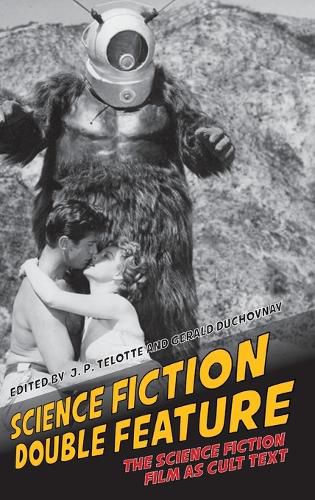Readings Newsletter
Become a Readings Member to make your shopping experience even easier.
Sign in or sign up for free!
You’re not far away from qualifying for FREE standard shipping within Australia
You’ve qualified for FREE standard shipping within Australia
The cart is loading…






Critical discussion of cult cinema has often noted its tendency to straddle or ignore boundaries, to pull together different sets of conventions, narrative formulas, or character types for the almost surreal pleasure to be found in their sudden juxtapositions or narrative combination. With its own boundary-blurring nature-as both science and fiction, reality and fantasy-science fiction has played a key role in such cinematic cult formation. This volume examines that largely unexplored relationship, looking at how the sf film’s own double nature neatly matches up with a persistent double vision common to the cult film. It does so by bringing together an international array of scholars to address key questions about the intersections of sf and cult cinema: how different genre elements, directors, and stars contribute to cult formation; what role fan activities, including con participation, play in cult development; and how the occulted or bad sf cult film works. The volume pursues these questions by addressing a variety of such sf cult works, including Robot Monster (1953), Zardoz (1974), A Boy and His Dog (1975), Tetsuo: The Iron Man (1989), Space Truckers (1996), Ghost in the Shell 2 (2004), and Iron Sky (2012). What these essays afford is a revealing vision of both the sf aspects of much cult film activity and the cultish aspects of the whole sf genre.
$9.00 standard shipping within Australia
FREE standard shipping within Australia for orders over $100.00
Express & International shipping calculated at checkout
Critical discussion of cult cinema has often noted its tendency to straddle or ignore boundaries, to pull together different sets of conventions, narrative formulas, or character types for the almost surreal pleasure to be found in their sudden juxtapositions or narrative combination. With its own boundary-blurring nature-as both science and fiction, reality and fantasy-science fiction has played a key role in such cinematic cult formation. This volume examines that largely unexplored relationship, looking at how the sf film’s own double nature neatly matches up with a persistent double vision common to the cult film. It does so by bringing together an international array of scholars to address key questions about the intersections of sf and cult cinema: how different genre elements, directors, and stars contribute to cult formation; what role fan activities, including con participation, play in cult development; and how the occulted or bad sf cult film works. The volume pursues these questions by addressing a variety of such sf cult works, including Robot Monster (1953), Zardoz (1974), A Boy and His Dog (1975), Tetsuo: The Iron Man (1989), Space Truckers (1996), Ghost in the Shell 2 (2004), and Iron Sky (2012). What these essays afford is a revealing vision of both the sf aspects of much cult film activity and the cultish aspects of the whole sf genre.